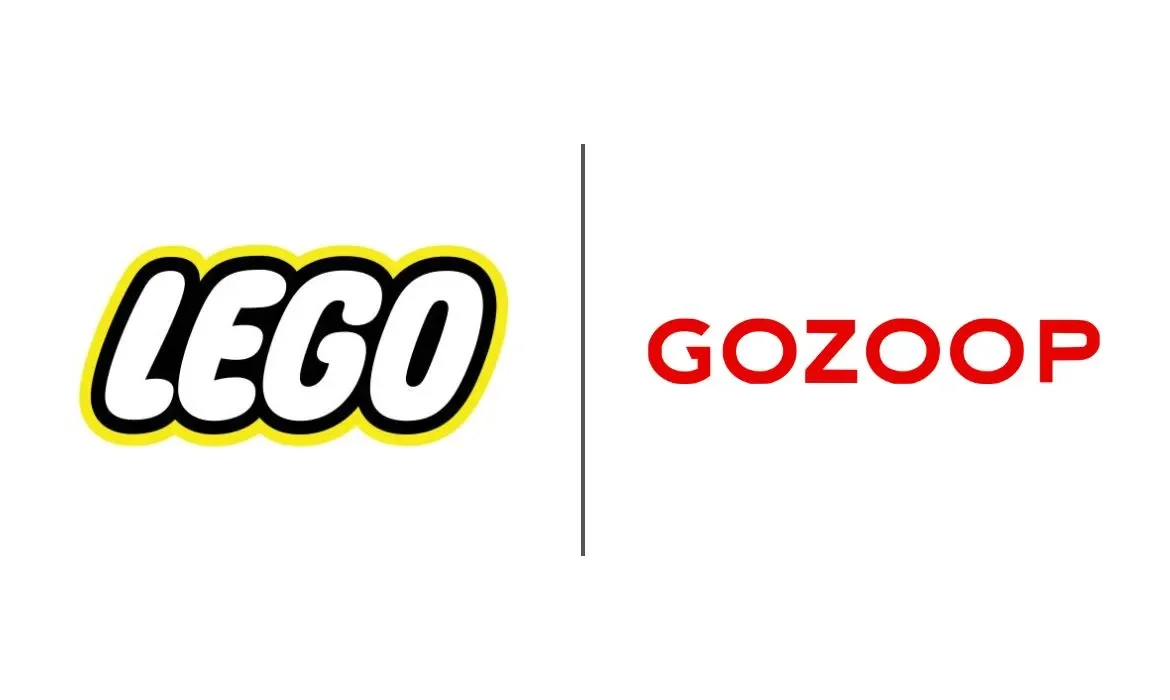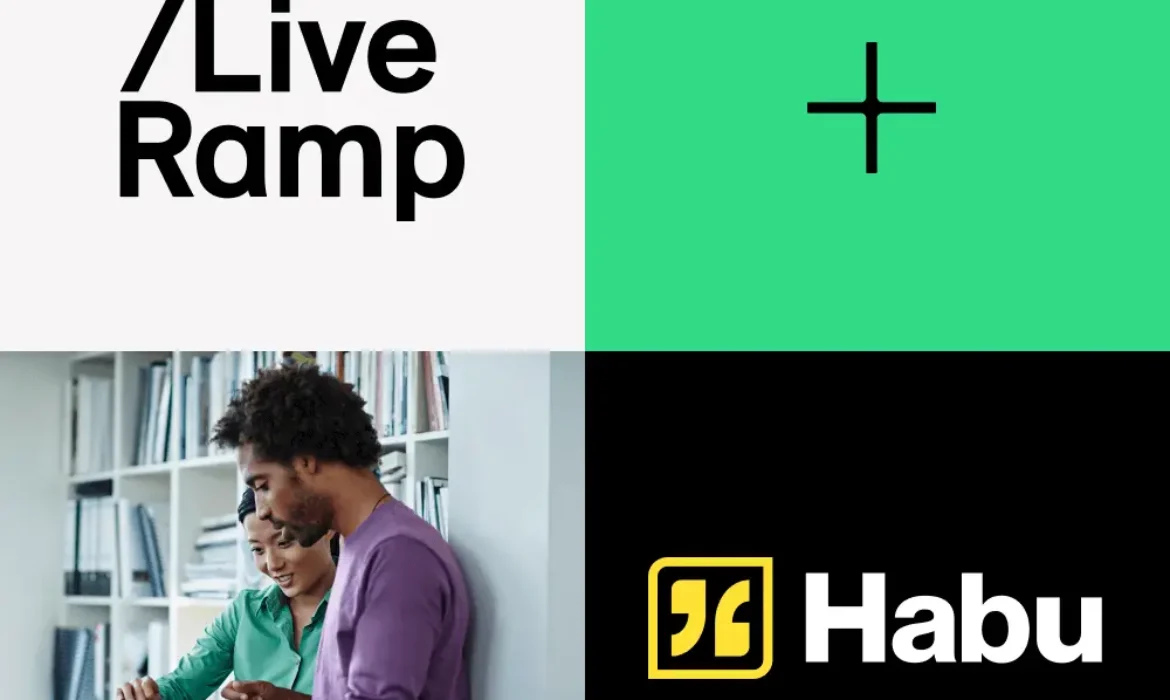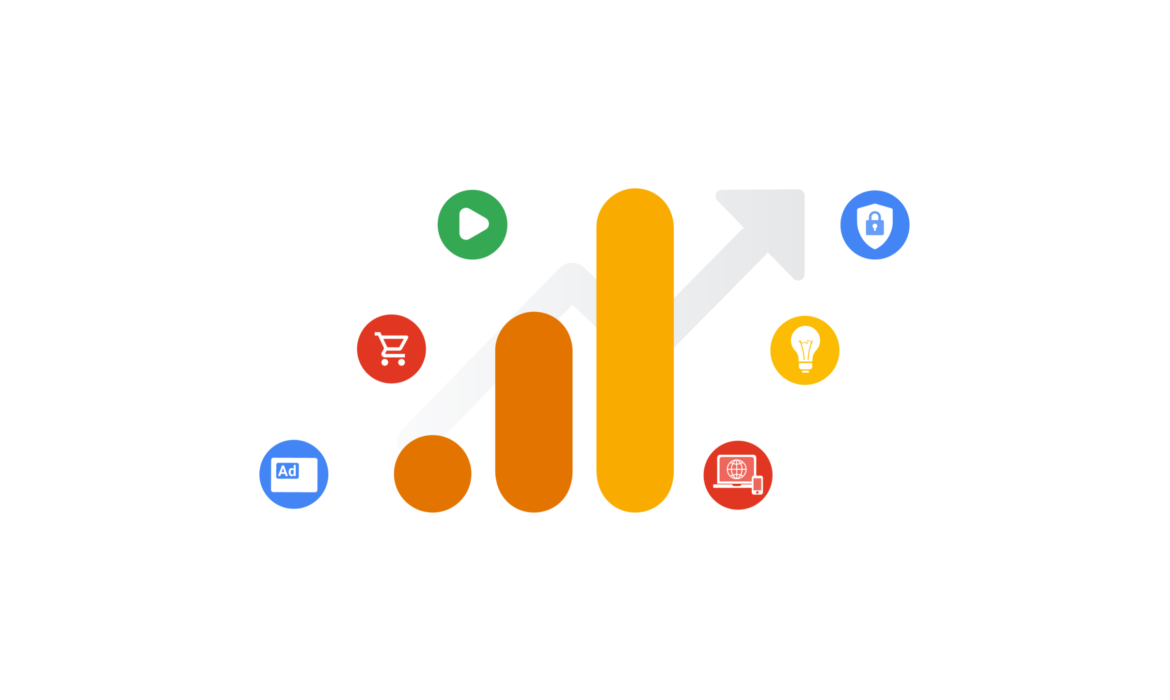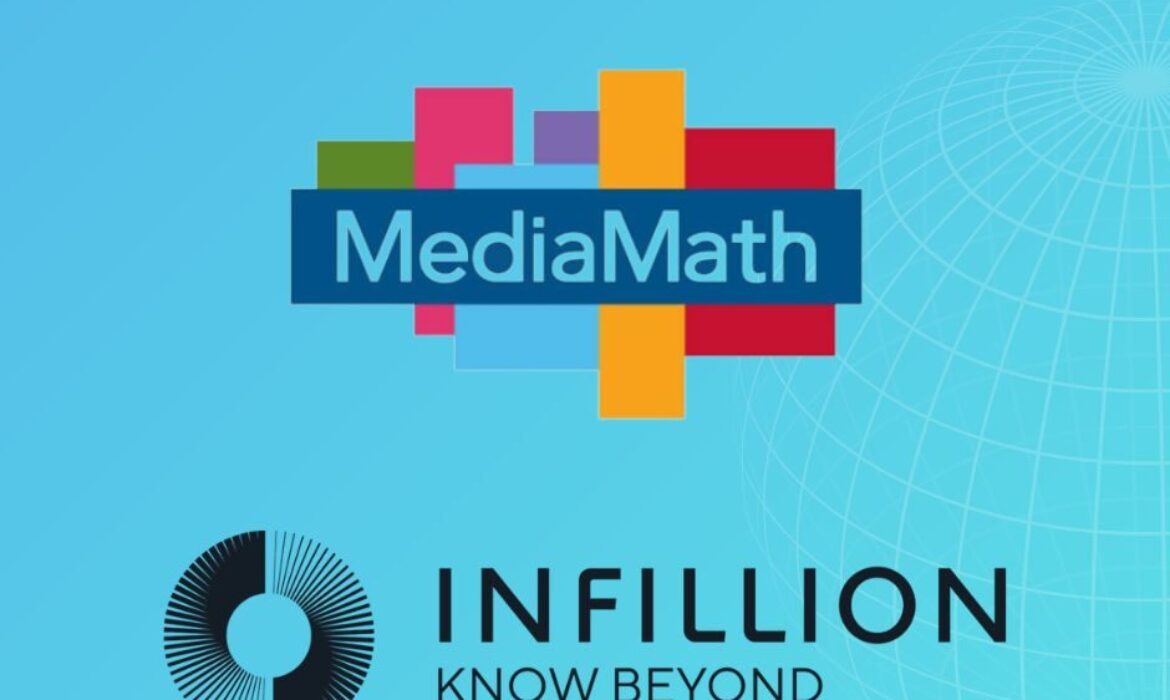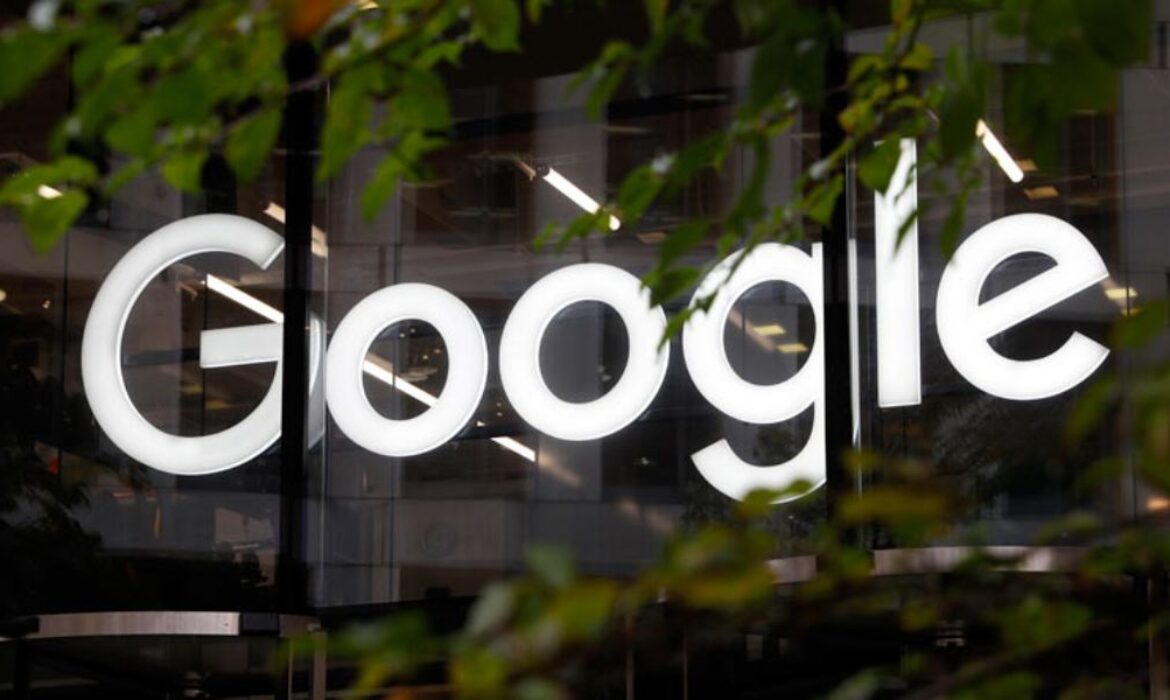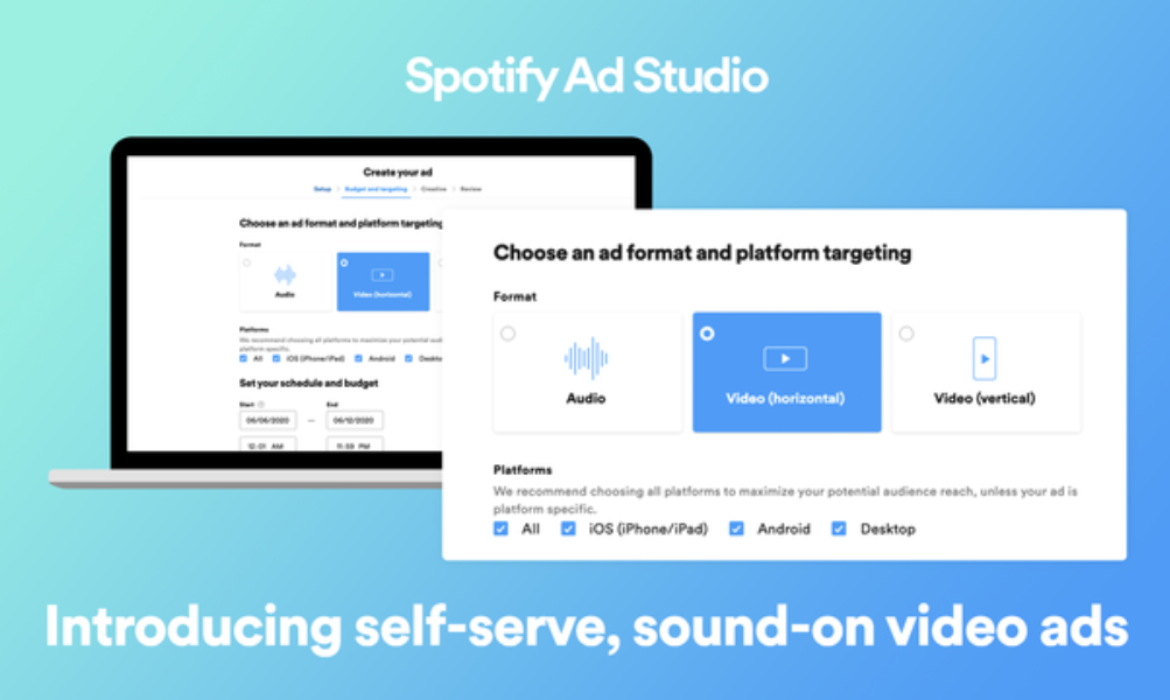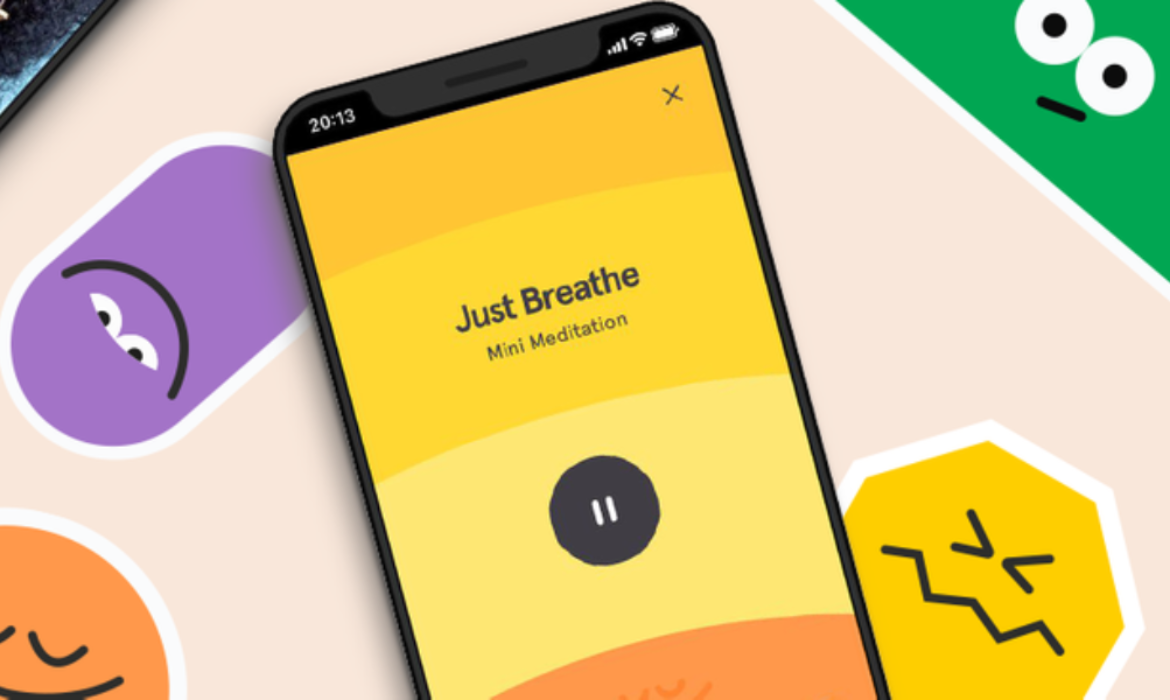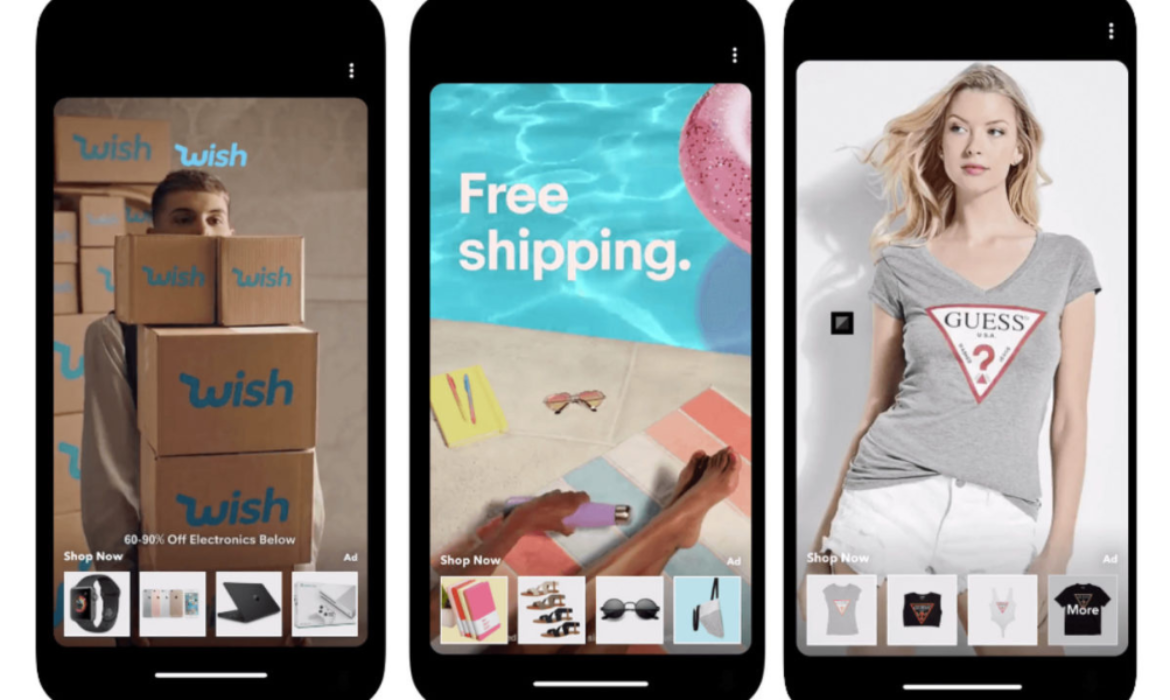Gozoop Secures the Creative Mandate for The LEGO Group In India
Danish construction toy manufacturer Lego has selected Gozoop Group to manage its creative account in India. 2024 marks the company’s 92nd anniversary of its founding. It was established in 1932. According to reports, the company employs over 25,000 people and has about 42 offices worldwide. Bhavana Mandon, Marketing Director for India at Lego, was recently elevated to the position of Country Manager.
Gozoop wins Lego’s creative mandate in India
Lego has built Legoland amusement parks all over the world to take advantage of its large consumer base, much like some well-known media companies have done. Additionally, Gozoop Group just won BN Group, a manufacturer of edible oil, an integrated marketing mandate. The group’s Mumbai office will handle the mandate. Gozoop is an independent integrated marketing group serving India and the Middle East with more than 300 marketing experts. Lego’s victory follows several significant account victories for Gozoop, such as those involving Godrej Properties and Builder Ashwin Sheth Group.
Here’s what they said
As reported by Storyboard18,
Bhavana Mandon said,
Being able to inspire and develop children for over 90 years is legendary and I am honored to be a part of this amazing journey of building the Brand Legacy in India. Immensely excited and thrilled with the idea of bringing smiles to the faces of kids and adults, I look forward to building this truly iconic and purpose-driven Brand in India.
Read More: Omnicom Secures Creative Mandate for Air India Express
LiveRamp Reveals Habu Acquisition for 200 Million Cash and Stock Transaction
The industry-leading data collaboration platform, LiveRamp, announced that it has finalized plans to acquire data clean room software provider Habu. The acquisition is set for about $200 million in stock and cash. LiveRamp’s capacity to provide global data collaboration at scale, across all clouds and walled gardens, will be further accelerated by this acquisition. This will enable customers to overcome fundamental challenges and unlock potent use cases for measurement and analytics.
For the first time, businesses will have a single, easy-to-use platform to connect data. It will enable data connection across clouds, warehouses, and clean rooms. These will include Amazon Web Services, Google Cloud, Snowflake, and now Azure and Databricks. Furthermore, it will consist of measuring campaigns across all programmatic and media channels. It will also measure campaigns across walled gardens, like Amazon, Google, and Facebook.
A single platform for activation, measurement, and collaboration needs
Data clean room software from Habu makes it safe, easy, scalable, and intelligent to collaborate across decentralized data. It is renowned for providing cross-cloud interoperability, walled-garden insights, and data actionability for marketing and technical users alike. With Habu’s technology, multinational corporations and media outlets can safely share first-party consumer information. Publishers and business partners can access this information for more targeted and efficient marketing. Businesses are inundated with data, and even the most advanced ones struggle to fully appreciate the value of their information.
These structural issues are resolved by LiveRamp and Habu working together to connect data and enable interoperability across walled gardens, cloud environments, and clean rooms while upholding governance and privacy standards. Together with LiveRamp’s best-in-class enterprise identity, connected ecosystem of more than 900 global partners and customers, and flexible collaboration capabilities regardless of where data resides, these potent qualities create the only industry-wide interoperable platform for data collaboration across all cloud, walled garden, and media partners worldwide.
Read More: LiveRamp Partners with Co-Op to Enhance Retail Media
Why should we care about this acquisition?
Secure virtual spaces known as “data clean rooms” allow first-party data from multiple independent sources to be resolved to a single customer’s profile while maintaining anonymity for that profile. Even though the technology has many benefits, as of a year ago, its adoption was limited. This was due to its high cost, the requirement for skilled personnel, and the low degree of digital maturity in many businesses.
Organizations are scrambling to amass an abundance of first-party data as signal loss rises and privacy regulations tighten. However, to develop and compete with partners while maintaining privacy. Data clean rooms are now among the top data collaboration techniques for securely combining and analyzing data to use insights to drive new business opportunities.
Whichever platform or partner is selected, these cutting-edge capabilities will give the company a significant competitive advantage. Meanwhile, it will also assist with business growth and customer relationships. Data clean rooms also offer the perfect basis for future innovation, with enterprise AI initiatives seeing rapid adoption.
The Habu acquisition will allow LiveRamp to deliver differentiated capabilities to customers to:
Streamline and simplify cross-cloud collaboration
Reduce complexity and IT infrastructure limitations while streamlining and simplifying cross-cloud collaboration by connecting data across clouds, warehouses, and clean rooms seamlessly.
Achieve single-view measurement
Realize the first-ever single view of measurement across all major CTV and TV platforms, media networks, walled gardens, and programmatic channels.
Enhancing enterprise identity
Get access to improved enterprise identity and connectivity solutions to dissolve data silos, confidently handle signal loss, and keep up with changing privacy laws.
Read More: Yahoo and LiveRamp Expand Partnership, Scaling Addressability
Data collaboration
Boost LiveRamp’s market-leading data collaboration network to provide access to the largest global network of publishers, walled gardens, retailers, brands, and agencies on a global scale.
Advanced AI initiatives
More data access allows advanced AI projects to train and improve analytical models. These in turn enable other enterprise use cases and inform marketing decisions.
Here’s what they said
Scott Howe, CEO of LiveRamp said,
LiveRamp enables next-generation data collaboration that delivers unmatched brand and business value. Through this acquisition, we will further empower our customers to unlock insights, use cases, and revenue streams by seamlessly connecting data and deepening measurement, across any platform or partner they prefer. Habu shares our vision, and together, we will help more global enterprises benefit from the transformative power of data collaboration.
Matt Kilmartin, CEO of Habu, added,
LiveRamp and Habu approached the data collaboration market with two complementary strategies that share the common goal of creating the largest data collaboration network rooted in privacy. As we look ahead to our next chapter as part of LiveRamp, we’re as committed as ever to our mission of paving the way for the next frontier of responsible data collaboration.
Read More: AlgoriX and LiveRamp Turbocharge Cookie-less Digital Advertising
Google Analytics Introduces 3 New Reports for 360-Ad Platforms
Google Analytics 4 has three new reports available. Users will be able to examine information from Search Ads 360, Display & Video 360, and Campaign Manager 360 in these reports. Those who have correctly integrated these 360-degree ad platforms with Google Analytics 4 can now access them. Furthermore, they can assess the efficacy of campaigns at generating traffic and converting leads. By incorporating these reports into GA4, campaign effectiveness analysis ought to be made simpler. Additionally, it ought to provide advertisers with better outcomes.
The 360-ad platforms
Search Ads 360 is a platform for managing searches. It supports Microsoft Advertising, Baidu, Yahoo Japan, and Google Ads campaigns. Campaign Manager 360 is a tool designed to manage advertising campaigns on mobile and web platforms. It handles ad serving, targeting, verification, and reporting. Display & Video 360 makes it easier to create ads, manage audience data, buy inventory, and improve campaigns.
Campaign performance with the new reports
The performance of campaigns created on the corresponding 360 ad platforms is detailed in each of the three new reports. By choosing the integration-specific summary card that has been added to the Acquisition overview report, users can access these reports. A user will see an option labeled “View Display & Video 360 campaigns,” for example, if they integrate Display & Video 360. The new Display & Video 360 report will open when this option is clicked.
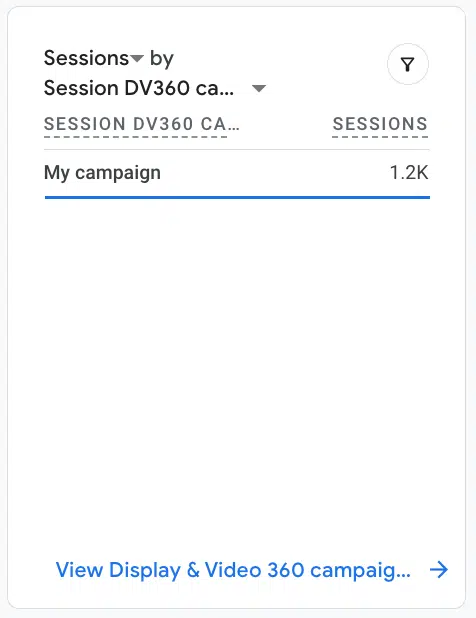
Image credit- Search Engine Land
A user can still access the report from the Acquisition overview report and continue analyzing historical data even if they choose to unlink a buying platform from their property. Additionally, Google Analytics 4 has added new traffic source dimensions to support the new acquisition reports. When a user clicks on a link to Campaign Manager 360, Display & Video 360, or Search Ads 360, these dimensions become available. The event, session, and user scopes offer new dimensions.
Read More: Google Plans to Introduce Programmatic Support for Limited Ads
New Traffic Sources Dimensions
Google has added more traffic source dimensions to the new acquisition reports. When the 360 platforms are connected and used at the event, session, and user level, these dimensions become available. With this update, one can understand cross-channel acquisition data by using cross-channel dimensions, like
Source
Here is where the traffic originates, such as from search engines like Google, social media sites like Facebook, direct users who enter your URL, or one of your newsletters, spring_newsletter.
First-user source
This shows where most of the site’s initial visitors come from. For example, if the first user source is “organic,” this indicates that the users found the website or app through natural search results, such as Google.
Session source
This displays the most popular original source for a group of website user interactions that take place in a given amount of time.
Furthermore, to comprehend cross-channel acquisition data, one can make use of integration-specific dimensions such as Source, Session Source, and First User Source. Then, in order to better understand where the traffic is coming from, they can use new integration-specific dimensions, such as SA360 source, SA360 session source, and SA360 first user source, to analyze acquisition data for a particular buying platform.
Read More: Google Launches Google Ads Data Manager for First-Party Data
Infillion Acquires MediaMath After $22M Bid Bankruptcy Deal
The ad tech company Infillion was identified as the top contender to acquire the recently insolvent DSP MediaMath during bankruptcy proceedings on August 23. Given that the company was originally valued at $1 billion, the company’s winning bid of $22 million was a great deal. According to Digiday, MediaMath CEO Joe Zawadski’s investment fund company, AperiumVentures, provided advice on the acquisition. Additionally, he sparked the idea that the ad tech expert would try to get back in touch with the business he created more than 15 years ago. According to court records, Genius Sports, a London-based provider of sports data and video streaming, placed the second-highest bid for MediaMath assets for $20.55 million.
On June 30, MediaMath submitted a Chapter 11 petition. The DSP service provider has a new home thanks to Infillion’s acquisition. The Delaware bankruptcy court accepted Infillion’s cash offer for MediaMath’s DSP and DMP holdings on August 23. One of the ad tech stories this year has also been concluded by a bankruptcy filing. Dozens of businesses have lost money as a result of one of the most well-known names in ad tech’s Chapter 11 procedures. Some others even speculate about what it indicates for the most vibrant industry in digital media.
Read More: DoubleVerify Acquires Scibids, Reinforces AI-Powered Solutions
MediaMath’s Downfall
MediaMath has 16 years of experience in the ad tech sector. However, it has recently had trouble keeping up with rivals like Google, Amazon, and The Trade Desk. It was unable to collect the required cash despite seeking more money a while ago this year and almost concluding a $70 million deal with a possible acquirer. The upshot was that the business filed for bankruptcy, which unfortunately resulted in the loss of nearly 300 employees.
MediaMath was one of the early pioneers in ad tech. It is usually regarded as the very first DSP in the sector. Thus, MediaMath’s surprising Chapter 11 filing roughly two months ago is what prompted the sale. This dramatic tale comes to a close with Infillion’s acquisition as the company’s former customers left. For the latter, the Infillion-MediaMath merger represents a remarkable fall from grace. Infillion will provide a modest 2% of MediaMath’s peak value.
Read More: Magnite Acquires Carbon That Will Allow Publishers Unlock The Value of Audience
Infillion’s Acquisition of MediaMath
It makes sense for Infillion to include MediaMath in its ad tech portfolio. The location data business Gimbal and the video ad tech platform TrueX gave birth to the video advertising platform. It focuses on the interactive advertising units that Gimbal purchased from Disney. A year ago, Gimbal and TrueX changed their names to become Infillion.
The 15-year-old demand-side platform that MediaMath brings to the story will enable Infillion’s programmatic ad tech stack to take shape. However, the business revealed in its bankruptcy filings that it owed over $125 million in trade obligations to a number of corporations. They include Google, Microsoft’s Xandr, and ad tech firms including PubMatic and Magnite. What will transpire to these outstanding invoices is still up for discussion as Infillion might be interested in rekindling those ties. Infillion is yet to confirm the accountability for MediaMath’s outstanding debt.
Positive outlook
Infillion’s founder and executive chairman, Rob Emrich, stated that the company anticipates MediaMath would be in a good spot to expand under new management. In the course of the auction on Wednesday, Emrich expressed his opinion that over the following five years, the MediaMath tech stack will produce $1 billion in inventory traffic, data fees, and hosting contracts.
Our current financial model calls for an additional $30 million There will be operating losses in the next three years as we bring this business back. Plus an additional $40 million In working capital.
In any case, Infillion seems certain that it can resurrect MediaMath’s advertising technology and start a new chapter. Whether the acquisition turns out to be profitable or a major oversight on Infillion’s part, only time will tell.
Read More: MediaMath Shutdown: Ad Industry in Turmoil, Seeking Alternatives
WPP and Optimizely Team Up for Data-Driven Digital Experiences
WPP and Optimizely, one of the market leaders in digital experience platforms (DXPs), have formed a strategic worldwide relationship. The alliance will aim at assisting clients in offering customers enhanced digital experiences. This groundbreaking collaboration will serve as WPP’s principal digital experimentation focus and Optimizely’s first global strategic undertaking.
Informed digital experience-focused deal
WPP and Optimizely have collaborated for 17 years through businesses like ACCO businesses, Aegon, Oister, etc. These days, customer standards are higher than ever. With this partnership, Optimizely will enable digital innovation and potential for WPP’s enterprise clients. As a platinum partner of Optimizely, WPP is privy to the latter’s DXP toolkit. These tools include experimentation, commerce, content management, and marketing. By utilizing these technologies, businesses will be able to leverage data to continually improve their digital experiences to increase engagement, conversions, and ROI.
As Google launches Google Optimize, its web and analytics product later this year, the strategic collaboration will also extend to enable partners to seamlessly connect Optimizely’s Web Experimentation and Google Analytics (GA4). WPP and Optimizely have agreed to work together to ensure a smooth transition to a new experimental network that will help brands deliver pertinent features and content.
Read More: Hypermedia Launches Z gallery, A premium OOH Art Experience
Here’s what they said
Stephan Pretorius, chief technology officer at WPP stated in the announcement,
“Powerful creativity and effective media strategy can be wasted if brands do not also prioritise conversion. Optimizely’s platform provides data that allows brands to maximise the chance of driving customers through the ideal journey across channels, and we’re excited to develop a joint offering to take to our shared clients.”
Alex Atzberger, CEO of Optimizely remarked,
“The world’s leading companies must have world-leading digital experiences, which can only be achieved through a test and learn approach. Together, WPP and Optimizely will ensure customers get the most out of their experimentation programmes so they can turn insights into increased conversions. We are thrilled to kick off this partnership.”
About Optimizely
The goal of Optimizely is to assist people in realizing their full digital potential. They achieve this by reimagining the way that product and marketing teams collaborate to design and enhance digital experiences across multi-channels. They assist businesses all over the world in orchestrating their whole content lifecycle, monetizing each digital experience, and conducting experiments across every customer interaction with the aid of their industry-leading digital experience platforms (DXP). In its 21 international offices, Optimizely employs nearly 1500 people and has more than 700 partners. More than 10,000 companies, including H&M, PayPal, Zoom, Toyota, and Vodafone, benefit from their assistance to improve client lifetime value, boost sales, and develop their brands.
Read more: WPP and Spotify Form A Unique Revolutionary Partnership
Innovation In Google During The Tough Times Of COVID
While most of the brands are struggling to survive during the tough times of pandemic, Google has set its goals right for the whole year. It is innovating itself without any trouble. Every month Google targets to enhance itself, according to the growing demand of the society. Google makes sure, that it fulfills the need of its users by providing them with exactly what they desire.

Image credit – Business Insider
Recently, Google introduced two new features for its search portals. One of the features is designed, and dedicated to the Black community. The feature will help in the upliftment of the community in society and will aim to end the injustice against them.
Due to the rise of anger in the community against the centuries-long injustice experienced by the community, several brands came forward to show their support towards the community. Google was amongst them.
#BlackLivesMatter!

Image credit – change.org
To fulfill his promise, the CEO at Google, Sundar Pichai recently added a feature to the map and Google search listing.
This feature is launched to empower the Black community. The feature will highlight businesses owned by the Black community helping them grow. However, only those members can avail of the benefit whose business has verified profiles in the US. Also, the business must be owned by a member of the black community.
Those businesses highlighted under this feature will be marked by an image(as shown below). The symbol will signify that the business is owned by a member of the Black community.

It is said that the step was taken to provide a financial boost to the community. It is a foreseen step to finally end the orthodox discrimination towards the community. Google is also partnering with U.S. Black Chambers, inc. To provide better features like Analytics helping the businesses groom and blossom.
In a statement regarding this following statement was issued by Google:
“As part of our $300 million commitment to support under-represented entrepreneurs, we’re integrating the attribute into the digital skills training programs we offer Black business owners through Grow with Google Digital Coaches. And through Google for Startups Accelerator for Black Founders, we’re starting our work with the first cohort of 12 startups.”
Google is keen to develop the feature even more and is seeking ideas internally. According to the management, they have already received more than 500 creative ideas to get this model to develop more brilliantly.
The company is also working on better and much strict “Policies against hate and harassment”
“About this ad”- More power to the user!

Image credit – 9to5Google
With a more transparent approach towards their users, Google has launched a new feature popularly known as “About this ad”.
To implement this feature Google will be launching new tools. It will help the users gain information about the advertisement they are receiving. It will help enhance security and will increase user privacy on the digital platform.
According to Google spokesperson, the vision is designed for a “thriving internet where people around the world can continue to access ad-supported content, while also feeling confident that their data is protected”.
“But in order to get there, we must increase transparency into how digital advertising works, offer users additional controls, and ensure that people’s choices about the use of their data are respected not worked around or ignored.”
Read More: Google Ends All Gossips: Revealed Fee Structure For Advertisement Tools

Image credit – AdEspresso
For a long time now, tech giants like Google are have faced a lot of criticism. Most of those were linked to their explicit behavior when it comes to money and user privacy. After being criticized and called upon several times by different government authorities for blind approach in the business during the usage of advertisers’ money, Google has finally decided to be more transparent with its business policies and proposals.
Therefore, Google shared a list of pricing for its tools used by advertisers for the advertisement. It was a huge step by Google, since before this release, advertisers were kept in the dark about the spent of their share of the money, and the profit earned by Google.
The tools for which Google revealed the prices include, DV360, Google Ads, ad manager, and its publisher tech.
The revealed prices are as follows:
These prices were revealed by Google in a series of articles and blog posts.
The prices are in the ratio of percentage for a $1 amount spent by an advertiser on an advertisement, divided between the publisher and Google.
- Google tech: Publishers – 69%, Google – 31%
- DV360: Publisher – 87%, Google – 13%
- Ad Manager: Publisher – 82%, Google – 18%
- Google Ads: Publisher – 86%, Google – 14%
- Ad sense by Google: 68% share taken by Google of the total spent by the advertiser.
Google has never been so transparent in regards to its prices, the sources say that this new transparent face of Google is due to the ongoing legal hearing conducted by the state attorney general and the Department of Justice.
Read More: Google Updated Its Demand-Side Platform With DV360!

Image credit – marketingland
Innovation has always been the motto of the company. To make sure that the advertisers at Google are equipped with the best tools available in the market, it recently launched its new self-service toolkit known as Display & Video 360.
The tool is launched to change the landscape of the advertisement. Display &Video 360 is a gift to its advertisers by Google.
Earlier, advertisers used the tools to make a hypothetical projection while running an online marketing campaign. The most crucial question that bothered the advertisers was the amount of audience that they will reach with the campaign. To make sure it’s no more a hit and try show for the advertisers, Google launched DV360.
With the DV360, the advertisers can now create a new campaign and check its reach to the audience as the tool provides a duplicate view of the campaign. The duplicate view will help the advertisers view the exact or say a more accurate number of audiences that they will reach with the campaign. Hence, no more blind bets!

Image credit – Matech Today
The tool has better forecasting capabilities, giving the advertisers a glimpse of the future for their campaign. It is also a better solution for the media planners as it provides them with a large proportion of benefits as better access to the tool as they always have a larger role to play.
The most crucial answer answered with the tool is, “how many unique people can I expect to reach with my overall campaign across any open auction display and video inventory as well as YouTube?”
According to Anudeep Pedditi, Programmatic Manager, OMD NZ:
“Once we commit to a reach objective, neither underachieving nor overachieving is an option. Display & Video 360 gives media planners the accuracy they need to effectively plan across all our programmatic campaigns.”
The Tools main aim is to provide the following features to its advertisers:
-
-
-
-
Focus
-
Options For Buying
-
Optimization And Reporting
-
Security
-
Conclusion
-
-
-
Read More: How Google’s Page Experience Will Change the Face of SEO in 2021

Image Credit – Edkent Media
Google will launch a new algorithm for its page experience and design. The new model will be based on user experience.
The new algorithm will surely affect SEO and web traffic. Therefore, to make sure that the advertisers are not affected by the changes, Google has announced that they will apply the changes in 2021. They have promised to inform upfront, at least six months beforehand.
An early reminder will help advertisers to prepare themselves for the changes.
However, Google made it clear that the new algorithm will be even stricter in ranking the web pages. If the user experience of a web-page is poor, Google will not rank the page on to the top list.
Google has also published a detailed document dedicated to the page experience criteria.

Image credit – Cardinal Path
The new algorithm will consist of some core vital features. This feature includes the following:
- Largest Contentful Paint (LCP): Measures the loading performance of your webpage.
- First Input Delay(FID): Measures the user interaction with the page.
- Cumulative layout Shift: Checks the stability factors of your webpage.
The Accelerated Mobile version (AMP) will also play a major role in the ranking of your page, as will be a metrics for the page experience.
Also, good content will always play a lead role in the page ranking.
As per a statement:
“While all of the components of page experience are important, we will prioritize pages with the best information overall, even if some aspects of page experience are subpar.
A good page experience doesn’t override having great, relevant content. However, in cases where there are multiple pages that have similar content, page experience becomes much more important for visibility in Search.”
Hence, entrepreneurs, startups, and businesses should be well prepared for the new changes.
Read More: Every 2020 Google SERP Feature Explained: A Visual Guide

Image credit – Pinterest
Have you ever imagine the amount of traffic Google experience in a minute, month, or year?
Well, here are some fun facts, every second there is an approximate of 63,000 search queries entered on Google search.
Also, near to 2 trillion searches are conducted every year!
Isn’t it amazing? However, you might ask, why does it matter?
Let us understand!
Google holds an approximate 72% market share of search engines. To make sure that your webpage is listed on the top of the list of Google search results you must have an understanding of Google SERP (Search Engine Result Page).
What is SERP? And, what all it provides to the advertisers on Google?

Image credit – OverthinkGroup
The Search Engine Result Page of Google has gone through a lot of changes according to the user view. It has become much more dynamic, relevant, personalized, and helpful.
Now the search engine of Google is equipped with several enhancements that use structured data. The search page consists of visual enhancement, better index, and optimization for the website. You must be aware of all these changes if you are planning for a better organic ranking for your website.
Here is the new enhancement for the search page of Google:
- Direct answer Box
- Rich Snippet
- Rich cards
- Knowledge Graphs
- Knowledge Panels
- Local Pack
- People also ask
- Image Pack
- Site Links
- Newsbox
You must be equipped with the knowledge of these for better results in organic ranking.
Read More: Rejoice Small Retailers: Selling Products is Now Free On Google Shopping

Image credit- Shopping&payments
MSME’s got adversely affected due to the widespread of COVID-19. Several small and medium scale businesses have lost their source of income due to the sudden breakthrough of this epidemic.
Therefore to make sure that these businesses sustain the effects of the crisis, Google is allowing small retailers to list their products for free on Google Shopping.
Explaining this decision, Bill Ready, President of Commerce at Google cites the fact that it is difficult for struggling businesses to pay for Google shopping listings at this time.
“And as consumers increasingly shop online, they’re searching not just for essentials but also things like toys, apparel, and home goods.
While this presents an opportunity for struggling businesses to reconnect with consumers, many cannot afford to do so at scale.”
Earlier, Google charged its customers as Pay per click (PPC). It can also be seen as a tactic by Google to compete with Amazon in the market of e-commerce.
Read More: Privacy Sandbox By Google Shows Backdoor To The Third-Party Cookies.

Image credit – https://searchengineland.com/figz/wp-content/seloads/2020/02/privacy-sandbox-cookie-stock-1920.jpg
Two years ago, Google announced that it will discontinue the usage of third-party cookies in its browser, which is Google Chrome. Since the announcement, several speculations surfaced, to understand its effects on internet traffic and advertisement. However, Google seems determined about the elimination, and this year Google announced “Privacy Sandbox” a step towards the replacement of third-party cookies.
It is developed to provide a secure browsing experience to its user.
According to a spoke person from Google, “This is an early-stage concept, and we don’t have more details to share right now, We plan to publish updates and progress in GitHub as part of the process.”
The concept uses a new algorithm designed by performing “Bit Request Signal Experiment”.
Privacy Sandbox was launched in August. The idea was to innovate ad recurrence and behavioral advertising. It aimed to help them work on the web without using third-party cookies. A mega event was organized, 163 giant tech organizations like Apple, Facebook, Axel Springer, The Washington Post, Criteo, The Trade Desk, and even Google participated. All are requested to share their views via. World Wide Web Consortium or GitHub to help the project succeed.
However, according to the Google developers, it is still in its initial stage and there is a lot of work that is needed to be done in this field.
Read More: Google pledges $800 million to coronavirus relief, including Ad credits

Image Credit – BusinessInsider
Google CEO Sundar Pichai explained:
“As the coronavirus outbreak continues to worsen around the world, it’s taking a devastating toll on lives and communities. To help address some of these challenges, today we’re announcing a new $800+ million commitment to support small- and medium-sized businesses (SMBs), health organizations and governments, and health workers on the frontline of this global pandemic.”
The commitment includes:
- WHO and other health organizations will get $250 million for advertisement.
- MSME’s and NGO’s will get $200 million.
- An additional $15 million in cash will be granted by Google.org to non-profits to bridge the gap between SMB’s.
- Those small businesses that are already active for a year with Google advertisement will get the help of a total of $340 million in Google ad. They will receive the credit in their accounts and can spend it by the end of 2020.
- The academic and research institutions in the field of COVID research will get $20 million.
- Financial support will be provided to the organizations to increase the production capacity for life-saving equipment.
However, not everything went great for Google during this tough time of COVID:
Read More: Google Cuts Marketing Budgets by 50%, Freezes Hiring.

Image credit – Brayve Digital
Key Points
- Budget cuts and hiring freezes across marketing and across Google.
- For the second half of 2020, Google is cutting its marketing budget to 50%.
- The cut is due to the reduced expenditure on advertisement by the brands during the time of the crisis.
- The development comes in less than a week from where Google is scheduled to discuss Q1 2020 results on 28th April.
According to a statement released by email:
“There are budget cuts and hiring freezes happening across marketing and across Google…We, along with the rest of marketing, have been asked to cut our budget by about half for H2.”
A company spokesperson said in an emailed statement to CNBC,
“As we outlined last week, we are re-evaluating the pace of our investment plans for the remainder of 2020 and will focus on a select number of important marketing efforts….We continue to have a robust marketing budget, particularly in digital, in many business areas.”
…we continue to invest, but will be recalibrating the focus and pace of our investments in areas like data centers and machines, and non-business essential marketing and travel.”
Read More: Google Withhold Programmatic Data, Advertisers Pulls Back Ad Spend

Image credit – Search Engine Land
As quoted by Digiday, the Head of Display at the U.S based retailer said,
“Google’s ad exchange didn’t make the list primarily because they’re not willing to give us any transparency or data around not only their take rates on our media sped but also anything we could already pull from our demand-side platform.”
“We’re seeing Google’s ad exchange become slightly less of the total pie,” said Jay Friedman, president at programmatic agency Goodway Group to DigiDay.
”I don’t have a percentage but it’s less but not significant.”, he further added.
The advertisers registered their doubts and raised concerns regarding the non-transparent behavior of Google. However, this must have been resolved after the release of the price list for its advertising tools by Google.
Google Is All Prepared To Compete with Amazon In E-commerce Market.
Google is all set to reveal its new initiative to fight the dominant Amazon in the e-commerce business.
After a series of serious attempts made by Google, to end the monopoly of Amazon in prior consecutive years, that is in 2013, 2014, 2017, and 2019. 2020 seems to be severely crucial as more customers are turning towards the online market every day, due to the COVID virus spread across the world.
Google announcement was a clear indication in the direction of its plans to spread its roots in the online market. Google has declared to charge lesser sales commission from the sellers on its platform and will also let third-party sellers like Shopify to use its platform.
Currently, the commission rates of Google’s online sales platform range from 5 percent to 15 percent depending on the category of the product.
Google might dominate the field of knowledge and information when trying to search for information. But, when it comes to searching and buying goods online, Amazon is the first choice of consumers. Due to consumers’ first choice as e-commerce, Amazon is spreading its wings in the advertisement market, which is a clear threat to Google’s core source of earning.

Google has taken several hits during these years while competing with Amazon. In a seven-year-long battle with Amazon, Google introduced several products to compete with Amazon. However, none of them succeeded. One such attempt at Google was Google Shopping Express! The service launched in 2013, offered one-day delivery for groceries. The users can take an annual membership for $95 and can avail of faster service. However, Google ended up shutting down the project.
After its failed attempts with Google Shopping Express, Google decided to convert it into Google online Mall. The Google online Mall included retailers like Best Buy and Target. In 2017, Google partnered with Walmart. This deal was supposed to bring many fortunes to the Google online market, but unfortunately, the partnership ended too soon.

Image credit- Shopping&payments
However, never giving up Google, added a buy button to its search engine. The online-button allowed the users to directly purchase the search engine, with the help of their credit and debit cards.
For an effective competition strategy with Amazon, Google brought in Bill Ready. Bill Ready was a former executive at PayPal.
The announcement in April came as a piece of happy news for the retailers. Now, retailers can list their products for free on Google online market listing. However, early the sellers had to buy the ads to get their products listed with Google. By this step, Google is expecting to attract huge audiences!
Mr. Ready, in an interview, described the position of E-commerce across the world. According to him, there is a wide range of audiences who are shopping online for their needs. Although, there is just a handful of platforms entertaining all of them.
“We want to make sure selling online is easy and inexpensive,” said Mr Ready. Follow
According to Google spokesperson, the changes will be visible to the people in the USA. Those who are already listing products on Amazon can use the same listing on Google, that is, without making any changes to the format.
The aim of Google is to take over Amazon, or at least, for the time being, be the biggest competitor. However is a 20 minutes long conference, Mr. Reddy shy out to take the name of their competitor, even for once.
Even when asked the question to name the largest rain forest in South America, Mr. Ready decided to dodge the question.
Although, he stated:
“Consumers benefit from a diverse and thriving ecosystem of sellers.” Adding that, “There is no one player that can serve all the needs of consumers.”
Making Video Campaigns on Spotify Is Now Easy with Sound-On Video Ads!
Key Insights:
- The Ad studio debuted in 2017 and thereafter Spotify has nearly doubled its user base.
- Spotify witnessed an 11% rise globally in mobile downloads.
- Spotify reports an average of 25% of overall ad revenue from video accounts.
- In the past one year, Spotify has witnessed a 68% increase of active advertisers, with double the ads running.
Spotify has announced video advertising on Ad studio, its self-serve platform, in Canada, the U.K, and the U.S. This update is available to select advertisers in the recently added test markets to Ad Studio in April.
The Ad Studio was created initially for small and medium-sized advertisers to connect with Spotify listeners and create budget-friendly, customized audio ads for the platform. In April, it had expanded to 18 more markets and exited the beta version.
Spotify Push into Video Ads can increase brand awareness and brand recall.
Spotify said that often users on other platforms prefer viewing video ads muted, however, Spotify listeners are’ engaging with their sounds on.’ Complimenting their audio ad offering, video ads will give brands a visual storytelling opportunity for the in-focus moments.
The streaming giant further notes that running video ads with audio produces higher brand results than going solely for video ads. Video ads with sound-on lead to 1.9x ad recall and 2.2x increase in brand awareness, according to the company data.
The company said in a statement,
“Unlike many other platforms, on Spotify, listeners are already engaging with their sound on, offering a valuable opportunity for a brand’s message to be seen and heard. This multisensory experience can extend a brand’s audio ad strategy, providing another touchpoint to capture listeners’ attention and share messages across all relevant moments.”
Rise in advertisers using Spotify Ad Studio’s creative perk
Ad studio that is available in 22 countries globally has leveled up the playing field in creative production by offering a free service to generate a brand’s ad spot. Advertiser on Spotify’s Ad Studio can upload a script and in as little as one hour (48 hours in some cases) they will deliver a fully produced ad that includes music and voice over.
The company said that 37% of Ad Studio customers rely on their free voiceover tool for ad creation. Additionally, 50% of its advertisers used this tool in May, which is an 11% rise from March.
Ad Studio offers two options of ad format for video ads- horizontal video and vertical video. Horizontal video can run across all platforms and vertical video is optimized for iOS and Android.

Image Credit: Adweek

Image Credit: Adweek
Why should brands advertise on Spotify?
The company reported recently that it has 286 million active users and 130 million paid subscribers. Spotify is the third-largest advertiser in the world after Facebook and Google.
Spotify Ad Studio enables brands to reach targeted and relevant customers. Their programmatic audio advertising is the best way to reach Gen X and beyond.
If you think ads may annoy the listeners of Spotify, think again. Statistics by Acquisio states, 75% of digital audio listeners think commercials are totally fine on a free streaming service. 47% think ads are even less intrusive on Spotify than traditional radio.
For instance, brands targeting the hip audience that are interested in current trends can consider advertising on Spotify. Advertisers can take advantage of the Spotify data of logged users like moods, preferences, listening habits, interests, and activities. This will help brands to create customized ads.
Learn more: Spotify Adds $1.7B To Market Cap In 23 Min Post A Deal With Joe Rogan, World’s Leading Podcaster.
Snapchat’s New Feature ‘Snap Minis’ Will Be the Next Hot Thing in the Market
Snap introduced an array of new products and partnerships for Snapchat including original shows, Minis, new lenses, new navigation bars, and games at the 2020 Snap Partner Summit.
The highlight of the event was Minis – a suite of miniature apps developed by third parties that will run inside Snapchat. This will be integrated into the Snapchat chat window that would allow users to buy movie tickets, shop with friends or meditate.
In an interview with The Verge, Snap CEO Evan Spiegel said,
“Let’s say you’re getting ready with your friends, or your school dance is two weeks from now — you can actually shop together with your friends, which I think could be a really fun experience.”

Image Credit: Snap
What Snap Announced:
-Minis are web-based apps built on HTML-5 for Android and iOS.
-Minis will start rolling out next month on Snapchat with the first seven minis.
-A mini-app by Coachella to coordinate and plan a festival line up with the friends.
-A mini version of Headspace to meditate and send encouraging messages to friends.
-A mini-app by Tembo to create flashcards for studying,
-A mini-app by Atom to buy movie tickets, pick seats, and choose timings.
Why They Matter:
– The inclusion of mini-apps will increase Snapchat’s functionality and potentially making it a one-stop app like WeChat for GenZ.
– The main purpose behind creating minis is creating eCommerce avenues as its main competitor WhatsApp has already ventured into digital payments and shopping.
– The company’s growth is stable in the messaging space but is not big enough to compete with the likes of Facebook and Google for ad revenues in the long term.
– As a result, it plans to build an ecosystem that revolves around its camera technology to unlock new revenue generation options.
What’s New For Brands:
– Brands especially looking to target the younger audience should consider developing a Snap Mini to provide services and ensure easy accessibility to Snapchat users.
– It is easy to maintain a mini-app than a full-size app as brands can leverage the Snapchat’s user base to gain traction.
By The Numbers:
– These miniatures applications are compared to WeChat’s mini-programs that generated $113 billion for Tencent last year, according to The Verge.
– Snap execs revealed that it reached over 229 million daily active users on average in the first quarter of this year, with over 100 million in the U.S. alone. (That’s larger than TikTok or Twitter’s U.S. footprint.)
And, there’s lots more from the 2020 Snap Partner Summit:
1. Camera Kit: It allows developers to bring Snapchat’s AR capabilities and engagement into their own apps that enable apps like Squad to create a co-viewing experience while video chatting with friends.
2. Dynamic Lenses: It allows developers to bring real-time information from their app into Snapchat lenses.
3. Bitmoji For Games: A cross-platform avatar for gaming on mobile, PC, or console. This means it is easier for a user to maintain a uniform gaming identity online by using one avatar across all games.
4. Snap Games: An interactive way for friends to play the game on mobile which includes “Bitmoji Party.”
5. Lens Studio: A free and new desktop feature that allows developers to bring their machine learning models to power lenses. For the first SnapML creations, the company partnered with Prisma, Wannaby, and others.
6. Local Lenses: A new feature that allows users to create 3D worlds on top of their building and or decorate nearby buildings with colorful paints and have a new AR experience.
7. Scans: Snap expanded its scan platform and announced new partners for plants, dogs, and nutrition information. Plant Snap will help the user identify 90% of all known plants and trees. Dog Scanner to identify 400 breeds, Yuka will launch a nutrition scanner to provide ratings on the quality of ingredients in the packaged foods and Louis Vuitton will help users scan the monogram to be transported into the inspiration behind their latest collection.
8. Voice Scan: It allows users to issue voice commands to find lenses.
Snapchat’s Automated Advertising ‘Dynamic Ads’ Is What Global Brands Need Today!
- Snapchat announced a new advertising product called Dynamic Ads. It brings automated customization to ads and is designed to make it easy for brands to set up their e-commerce business on Snapchat.
- Snap first introduced Dynamic Ads in 2019 to e-commerce retailers in the U.S and began testing the ad unit last October.
- The stock was down 1% after the company launched Dynamic Ads in the U.K, Europe, Australia, and the Middle East after being offered only in the U.S.
- Google and Facebook both offer brands Dynamic Ads.
Snapchat Dynamic Ads or Dynamic Product Ads (DPAs) allow a brand to automatically create ads in real-time based on their own product catalogs which may contain hundreds of items. This means if a price or availability changes, ads will be updated automatically with less human intervention. Dynamic ads will make selling products easier for retailers and brands and can serve Snapchat’s 229 million daily active users based on their interests. Snap offers five templates to advertisers to showcase their products in a way that they look native.

Image Credit: Search Engine Journal
Here is the example of the template after a product is populated:

Image Credit: Search Engine Journal
Brands like Adidas, FarFetch, and Topshop were amongst the first brands to test Snapchat Dynamic Product Ads and all reported positive sales results from showcasing their products and services through customized ad formats.

Image Credit: CNBC
In the wake of the COVID-19 pandemic, Adidas has further accelerated its digital business and eCommerce is their key focus in 2020. Adidas test in Europe elicited positive feedback:
“We’re excited to beta test Snapchat’s Dynamic Ads in the U.K., Germany, France, and the Netherlands. Within weeks we saw a 52% growth in ROAS (return on advertising spend) and we have subsequently grown our investment.”
“The launch of DPAs allows us a route to reach our target Gen Z and Millennial audiences with relevant product creative throughout the consumer journey.”
– Rob Seidu, Sr. Director of Media Activation, Europe

Image Credit: MediaTel
FarFetch chief marketing officer Gareth Jones said that there is a shift in consumer interaction with eCommerce as consumers are increasingly shopping on their mobile phones during the COVID-19 lockdown which is expected to continue. Jones added that Snapchat Dynamic Ads have transformed the brand’s activity across the entire sales funnel.
“We lent heavily into DPAs during the testing period and we have seen significant success that has translated into high-quality customers and ultimately transactions. We plan to continue to build on our relationship with Snapchat and we see them as an always-on partner.”
Topshop was the first brand to do a beta test and it achieved four times the UK benchmarks for ROAS within two weeks. According to Topshop,
“DPAs have allowed Topshop to reach Snapchatters with high-quality, and relevant ads throughout the consumer journey, and based on such strong results, the activity will be scaled and launched into further markets over the coming weeks.”
Implications on Business
Lockdown has forced many businesses to shift their focus to eCommerce and keep up with consumer demands. According to Interactive Media in Retail Group, online sales reached a 10-year high in April, marking a year-over-year increase of 23.8%.
Snap reported revenue of $462 million in the first quarter, up more than 44% over the first quarter of 2019 and ad revenue grew as they relied on big-spending large advertisers.
According to Ed Couchman, general manager of Snapchat U.K,
“The coronavirus has accelerated the need for businesses to look at their digital sales channels and encouraged them to be more innovative in how they do that.”
“Since we opened up the beta testing I was impressed at the number of businesses who wanted to get involved – far above what we expected – which really shows the appetite for brands to get on board with e-commerce.”
“We are seeing strong results from advertisers in multiple sectors from high street clothing stores to food delivery who have been testing the product.”

